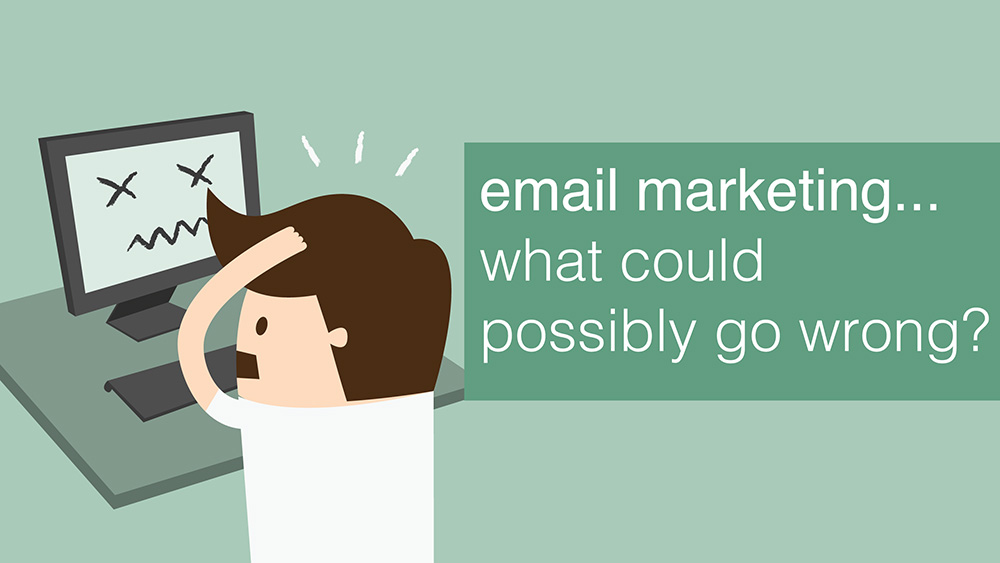Sending to cheap or free databases of email addresses – what could possibly go wrong?
This week, we are going to take a look at what the implications are of sending email marketing to bad lists
Ok, first up, let’s take a look at what we mean by bad data.
Bad lists are lists of email addresses, where the recipients have not asked to receive your mailer.
Your company will be completely unknown to them and they haven’t followed your opt in process.
Sometimes you may see large lists of email addresses for sale, or business contacts may offer to trade databases with you.
As tempting as it may be to suddenly increase your list of email addresses quickly and easily, it’s never a good idea to do this.
So, why is it not a good idea to send to these addresses
=======================================================
Well, the first and probably the largest reason is the legal implications.
If these addresses are consumers then the law states that anyone that you are mailing needs to have asked to receive your mailer.
If challenged you need to be able to provide proof of how and where these people have opted in.
The legislation in place here is The Electronic Communications Act, over recent years it has had a few revisions, but is very clear about emailing consumers, clearly detailing what is and isn’t legal.
The Information Commissioner’s Office investigate all complaints and have the power to impose some very significant fines.
The next area is domain & reputation damage
Email filtering companies refer to block lists when deciding if you email is going to be delivered, blocked or put into junk.
If your company domain name appears on one of these block lists then any email you send from your domain will be blocked.
Appearing on one of these lists is potentially catastrophic, as this affects every email you send; so not just marketing, this covers anything sent using your company name.
So how would sending to a bad list block your company name?
If a recipient feels that your mailer is unwanted spam, then they can easily complain to their internet service provider, or log you as a spammer through their filtering software.
If this happens, your domain name will be logged on a block list as a spammer.
The next area is sending server damage
If a recipient receives your mailer and they don’t recall asking to receive it, they will probably hit the ‘mark as spam’ button inside their browse.
Every time this happens, the sending server IP address is flagged.
Every sending server has a percentage score that is affected by positive and negative history. When the recipient marks as spam, this records negative history.
If the percentage score starts to drop, then future mailings will have an increased chance of being classed as spam or being blocked.
This means that the success of all future mailing will be impaired by the damage cashed of sending to one bad list.
Can I easily repair any damage caused?
Doing this is very hard indeed, finding out who has blocked you and why are incredibly difficult to do.
It involves lots of detective work and lots of time.
Even when you find who is holding the block list, often they will not accept removal requests.
So, how do I stop all of this from happening in the first place?
Well, unlike the rest of the answers in this video, this is a quick and easy one:
Only send marketing emails to people that have asked to receive them from you;
in short…..don’t send spam.


